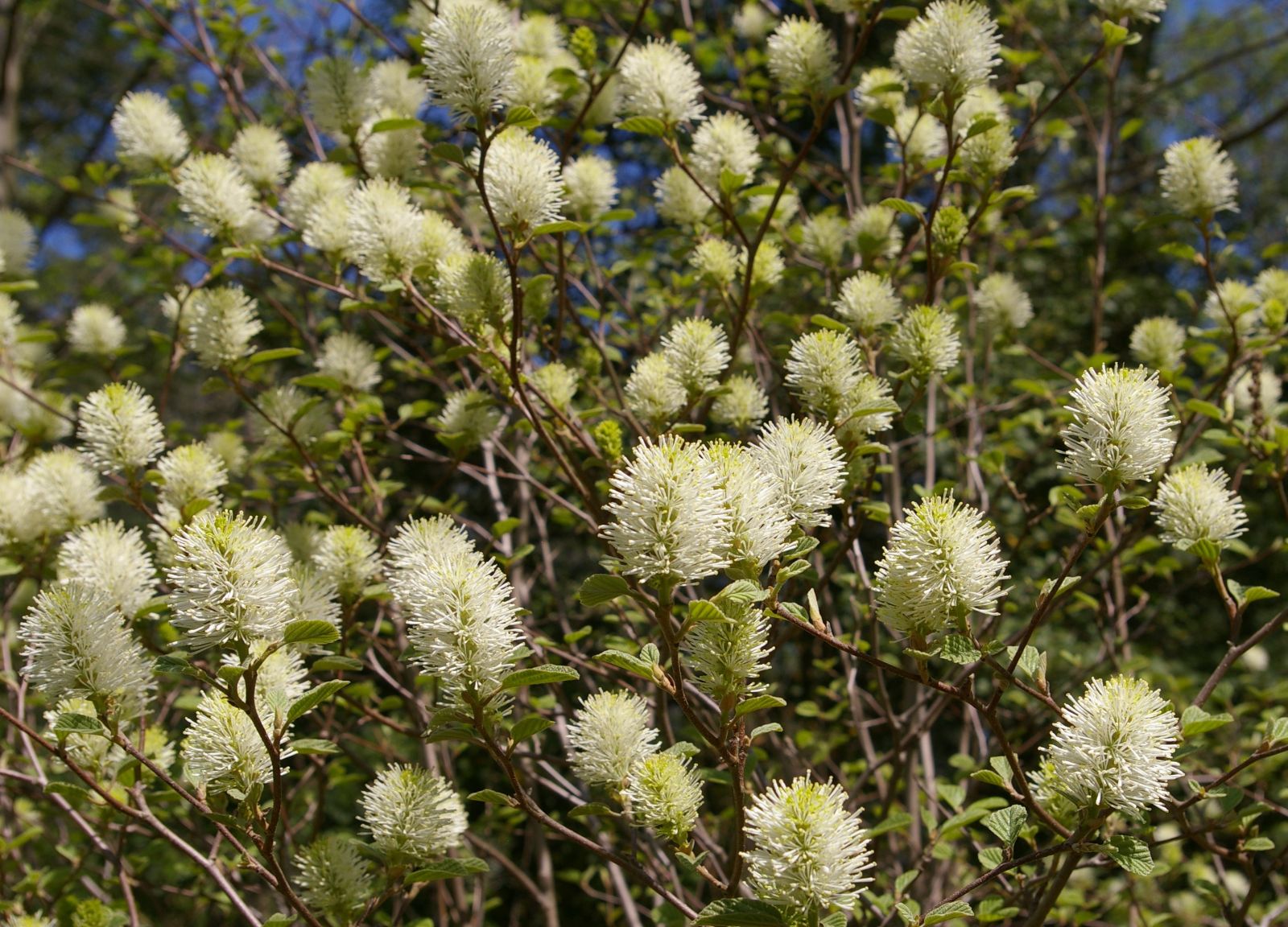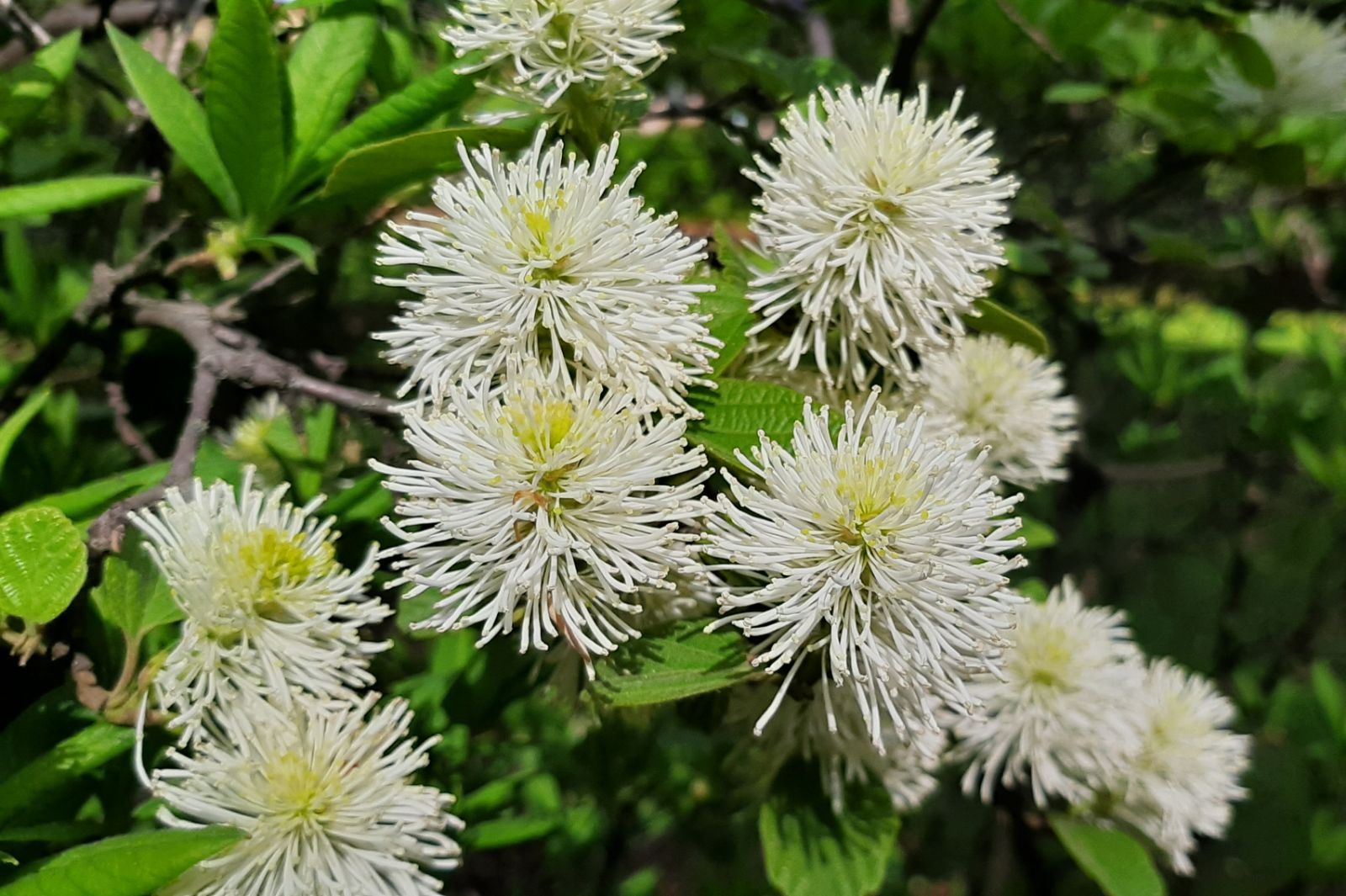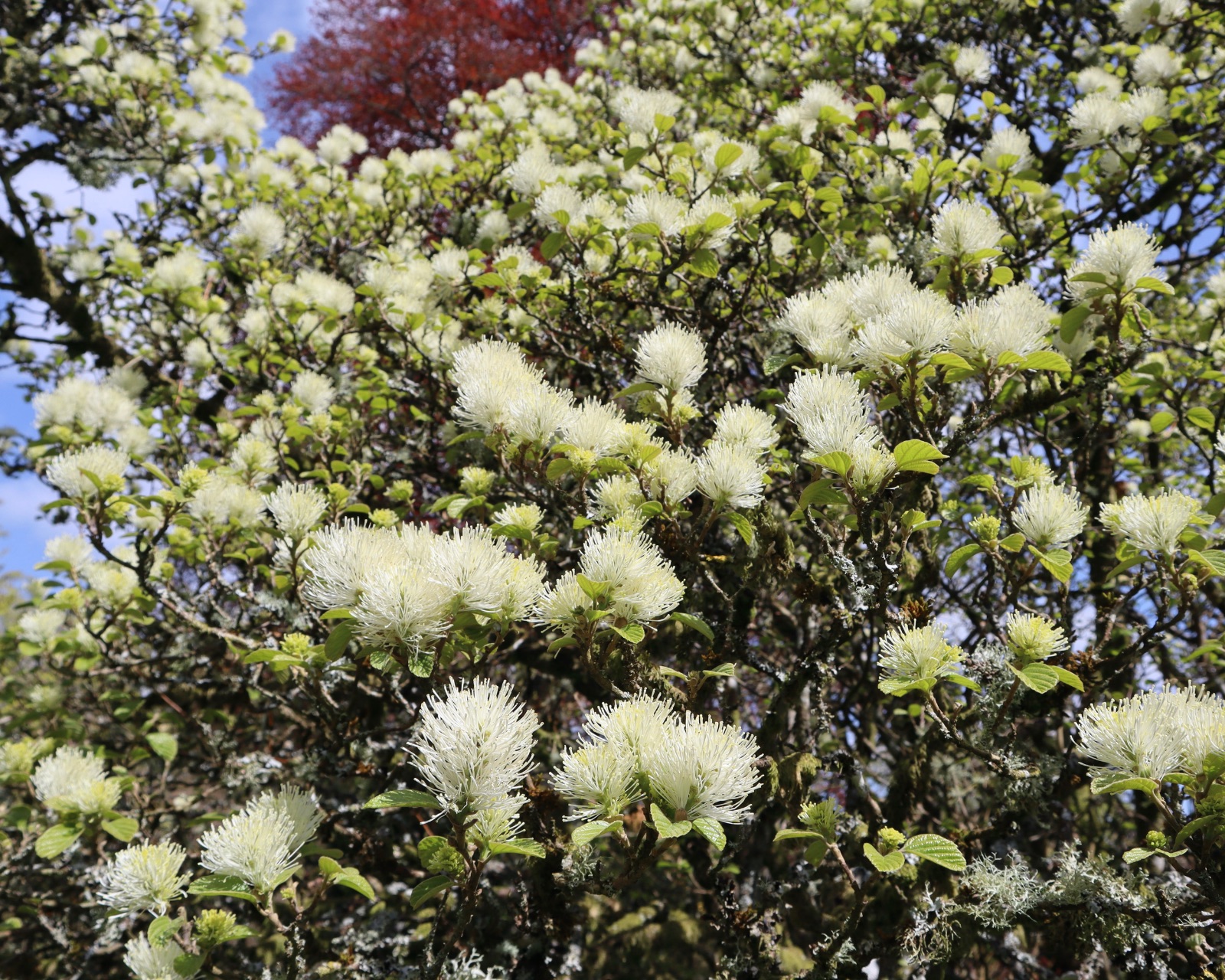Fothergilla major
Credits
Article from Bean's Trees and Shrubs Hardy in the British Isles
Recommended citation
'Fothergilla major' from the website Trees and Shrubs Online (treesandshrubsonline.
Genus
Synonyms
- Fothergilla alnifolia var. major Sims
- Fothergilla monticola Ashe
A deciduous shrub, ultimately 6 to 10 ft high, forming a rounded bush with mostly erect stems; young branchlets covered with stellate, whitish hairs. Leaves roundish oval or broadly ovate, 2 to 4 in. long, and from two-thirds to nearly as wide, with a few teeth above the middle, or almost entire, upper surface dark glossy green becoming almost or quite glabrous, lower one glaucous, with stellate hairs, especially on the midrib and veins; stalk downy, about 1⁄3 in. long. Flowers numerous, in an erect spike, 1 to 2 in. long, terminating short lateral twigs; the inflorescence owes its beauty to the numerous clustered stamens, which have pinkish white stalks 3⁄4 in. long, and yellow anthers; petals none. Capsules 1⁄2 in. long, splitting at the top. Bot. Mag., t. 1342.
Native of the Allegheny Mountains from Virginia to S. Carolina; grown in English gardens in 1780, but apparently long lost to cultivation until reintroduced to Kew from the Arnold Arboretum in 1902. It is a most charming shrub, especially to those who love out-of-the-way species. It succeeds extremely well in a mixture of peat and sandy loam, producing its fragrant spikes profusely in May. The leaves turn yellow, orange-yellow, or red before falling. It strikes root freely from cuttings of fairly firm wood in gentle heat, and is quite hardy. Certainly it is in every way superior to the commoner F. gardenii, and it is strange that it was so long lost to gardens.
The botanical description given in the first paragraph is of the plant that is considered to represent the typical state of F. major. More glabrous plants have been given specific rank as F. monticola but this species has never been generally recognised by botanists and there seems to be no justification for maintaining it any longer. Differences in habit and autumn colour between F. major and “F. monticola” have been adduced, but these are really clonal differences which are bound to occur where a variable species is propagated vegetatively. Furthermore, some plants in commerce as F. monticola answer to catalogue descriptions in having orange and red autumn colour and being of low, spreading habit; but botanically they would be referable to F. major even if F. monticola were to be recognised as a distinct species.



